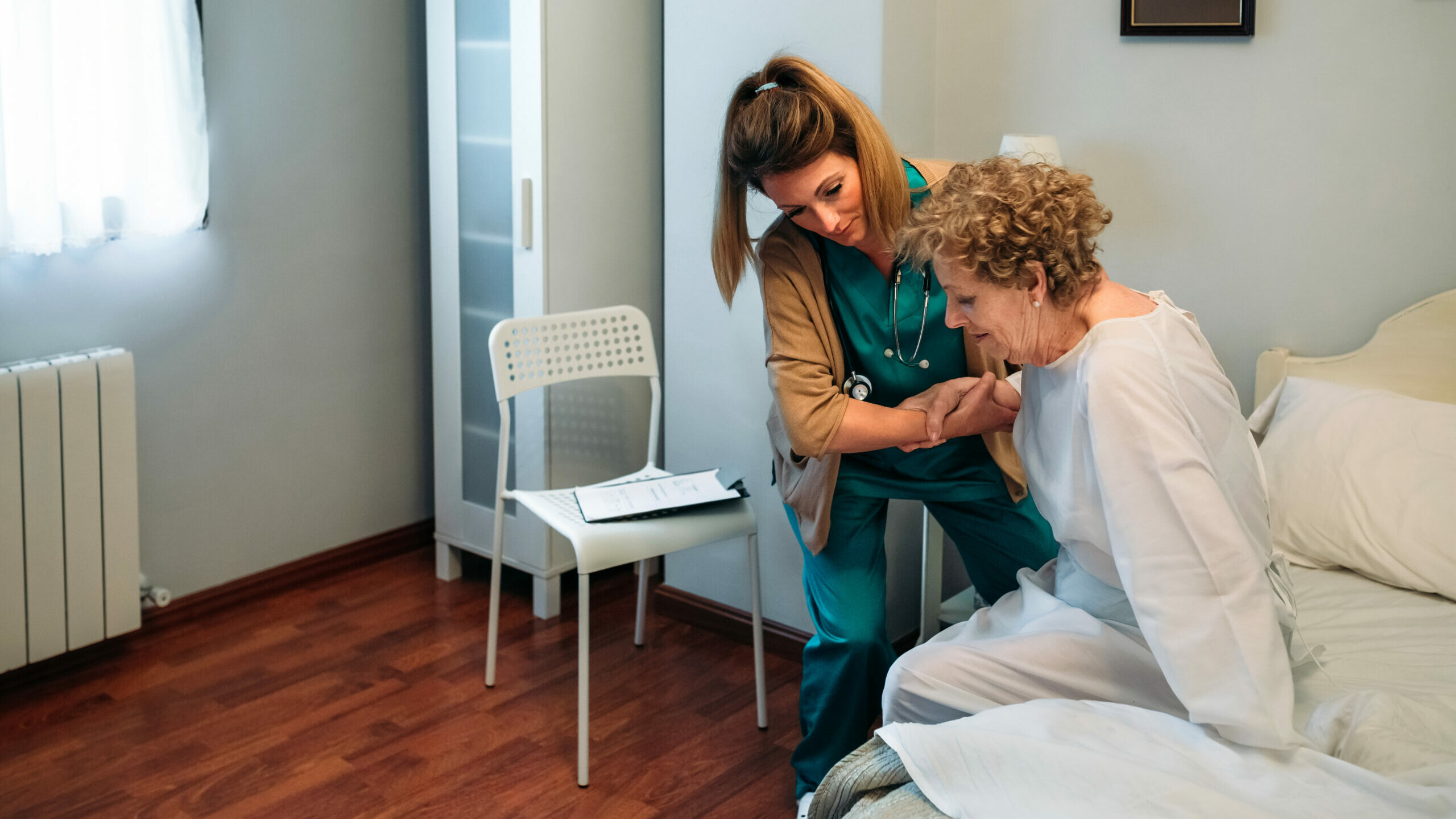Bed sores, also known as pressure ulcers or decubitus ulcers, occur most commonly in people who spend most of their time laying or sitting in one position. If someone develops a bed sore, it can unfortunately become a serious problem—left unattended, bed sores can progress into severe injuries that may become infected.
Fortunately, some research suggests that it’s possible to prevent up to 95% of all bed sores! As a nursing professional, it’s up to you to know how to prevent bed sores. This knowledge will help your patients stay as healthy as possible, even if they are at high risk for bed sores.
Understanding Bed Sores
Bed sores form as a result of long-term pressure placed on one area of skin. They usually form where the skin covers a bony part of the body like the ankles, hips, or tailbone. It typically takes a little while for pressure ulcers to form, usually over a period of several hours or days.
Every pressure ulcer develops because the pressure of the body laying or sitting in one position too long blocks blood flow to certain areas of skin. When blood can’t reach the skin, the skin itself can die. As a result, a portion of the body’s protective skin layer disappears, leaving the person vulnerable to infection.
Bed sore risk factors
There are several risk factors for developing bed sores, including:
- Being bedridden
- Immobility
- Inability to sense pain
- Prolonged unconsciousness
Also, people living with certain medical conditions could be more likely to develop a pressure ulcer. This includes people diagnosed with circulation issues, diabetes, malnutrition, or incontinence. Poor nutrition and long-term dehydration can also play a role in bed sore development.
Bed sore stages
It’s important to understand that there are several layers that make up the skin. Usually, bed sores affect the upper most layers first, progressing to deeper layers if treatment isn’t started quickly.
Generally, doctors group pressure ulcers into four separate stages ranging from mild to severe. Each stage usually presents with certain symptoms that help make identification of the bed sore easier.
- Stage 1: Only the upper layers of skin are affected. The area may appear red or, for those with darker skin, slightly blue or purple. The sore might feel warm when touched. The patient may say the area hurts, itches, or burns.
- Stage 2: There may now be an open sore, blister, or scrape at the affected area. If the patient can feel pain, it’s usually significant.
- Stage 3: Further damage to deeper layers of skin cause the bed sore to appear crater-like.
- Stage 4: At the most severe stage, there may be a large, deep wound present where the pressure ulcer first formed. The patient’s skin, muscles, and bone may all be affected.
How to Prevent Bed Sores
The best way to prevent bed sores is to know what to look for and to recognize problems early. Each time you assess your patient, you should be sure to pay attention to all areas of skin for any signs of change. If you decide a pressure ulcer might be forming, you can let the other members of the care team know and then take steps to reduce damage to the skin.
Turning and repositioning each patient at least once every two hours is a good way to help prevent bed sores. If your patient is sitting up in bed or in a wheelchair, ask them or help them to shift their position at least once every 15 minutes. Beds and wheelchairs should also have soft padding to help reduce the amount of pressure on the skin.
It’s also important to provide good skin care measures, especially to those who may be incontinent. Keep the patient’s skin clean and dry by immediately removing and replacing wet or soiled clothing or bedding.
Further, you should ensure your patient receives proper nutrition and stays hydrated. Good nutrition supplies the body with calories, vitamins, minerals, protein, and fluids that are needed for wound repair. Without good nutrition, it’s harder for the patient’s body to heal any pressure ulcers.
Learning More About Bed Sores
In the course of your nursing career, you’ll likely deal with bed sores more than once. Staying up-to-date on the latest research about bed sores is key to ensuring your knowledge base is as complete as possible.
IntelyEdu offers many instructional courses, including Identifying, Preventing, and Treating Pressure Injuries. Courses are available for free for all IntelyPros. Taking advantage of this course and others can help you learn how to prevent bed sores so your patients stay as healthy as possible.

Sarah Handzel, BSN, RN began writing professionally in 2016 as a way to use her medical knowledge beyond the bedside. She obtained a Bachelor of Science in Nursing degree and worked as a registered nurse in multiple specialties, including pharmaceuticals, operating room/surgery, endocrinology, and family practice. With over nine years of clinical practice experience, her unique insights into the healthcare industry help her craft compelling content that targets both healthcare consumers and clinicians.
